Burn, Baby, Burn! Can a Fireplace Help You Save On Your Electric Bill?
On a chilly winter evening, nothing feels better than sitting around a toasty fire. A warm fireplace can create a cozy atmosphere and quickly heat up your living room, but can the extra heat actually help you save on your electric bill? To answer that question, we must first look more closely at the type of fireplace you have in your home.
Wood-Burning Fireplace
A classic! Wood-burning fireplaces provide the most traditional source of heat, but they also are the least cost-effective when it comes to your electric bill. When using a wood-burning fireplace, almost all of the heat generated escapes right out the chimney. These types of fireplaces are also the most difficult to clean. They require regular maintenance and can adversely affect the air quality inside your home.
What is good rule of thumb when monitoring if your fireplace is negatively impacting the air quality in your home? You should never see smoke inside. If you see smoke inside the home while using your fireplace, or an excessive amount of smoke coming out of the chimney, then it’s time to have your wood-burning fireplace inspected. Inhaling smoke from a wood-burning fire can have a slew of negative effects on your health.
It’s also important to only burn cured, dry wood. Burning wood from pieces of furniture, which likely contain paint or other types of finishes, can release strong chemicals into your home.
Gas Fireplace
A new twist on the old favorite, gas stoves burn natural gas instead of wood. Otherwise, they are similar in structure to a wood-burning fireplace and often contain ceramic “logs” that create the illusion of burning wood. They are also super convenient to use, as they can be switched on and off at the touch of a button. While they preserve more heat than a wood-burning fireplace, they still lose about 75 percent of the heat they generate.
Gas fireplaces also must be carefully maintained to ensure they are ventilating properly. If not, they run the risk of exposing you and your family to dangerous carbon monoxide. It is vitally important to install and maintain both smoke and carbon monoxide detectors in your home, fireplace or no fireplace.
Another key consideration when looking at gas fireplaces is the cost of natural gas and propane in your area. Depending on your location, both can get expensive.
Gas Insert
A gas insert is a metal box, usually fitted over a wood-burning fireplace, that sits inside another metal box. The air between the two layers of metal is heated and emitted outward. It’s similar to a regular gas burning fireplace except it retains significantly more heat. With a gas insert, only 20-30 percent of the heat produced is lost because it’s not escaping out the chimney.
They also require very little maintenance, which can save you a lot of time when it comes to upkeep. The downside to these types of fireplaces is, once again, the steep cost of propane and natural gas.
Electric Fireplace
A modern marvel, electric fireplaces work without the need for wood or gas. They work by drawing cool air inward, heating it with metal coils, and then gently pumping the warm air back out. Many units have the option to change the color and ferocity of the artificial flames, making them highly customizable to your needs.
Out of all the options discussed, electric fireplaces are certainly the most cost and heat effective. Only about 1 percent of the heat produced is lost, with none of the mess. Without gas fumes or smoke, they are far better for the air quality within your home.
However cost effective they may be, even these high-powered units have their limits when it comes to heating your home. Most fireplace units, gas, electric or otherwise, have a limit when it comes to the space they can heat. Having the fireplace too close to, or too far from, your thermostat can also limit the fireplace’s effectiveness, as it gives your thermostat a false reading of your home’s overall temperature.
In short, while fireplaces can be cozy and inviting during the cold winter months, they aren’t a good bet when it comes to saving money on your electric bill. It’s far more cost effective to use your fireplace as an enjoyable, but non-essential, supplemental heating source in your home.
Are you looking for other ways to lower your energy bill this winter? We can help! Barineau Heating and Air can keep your home comfort system running efficiently, keeping your bills in check. Book an appointment online or call (850) 580-4029 to get started!




